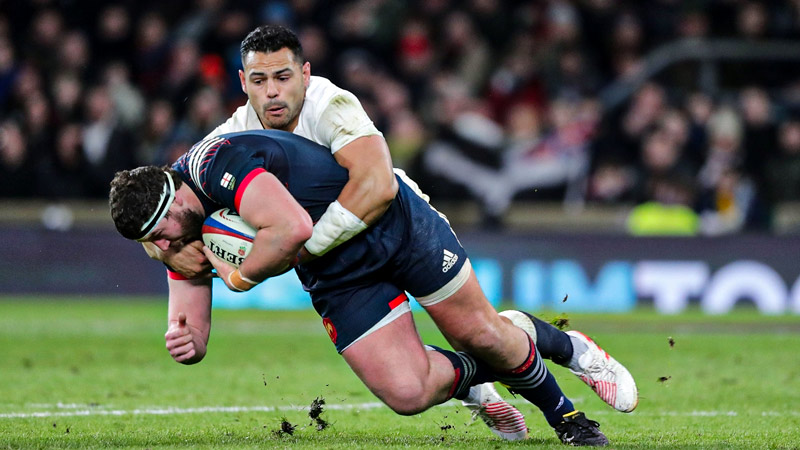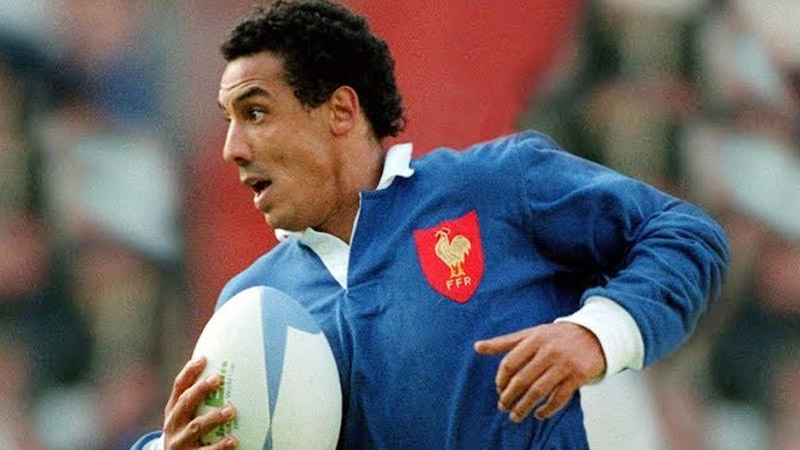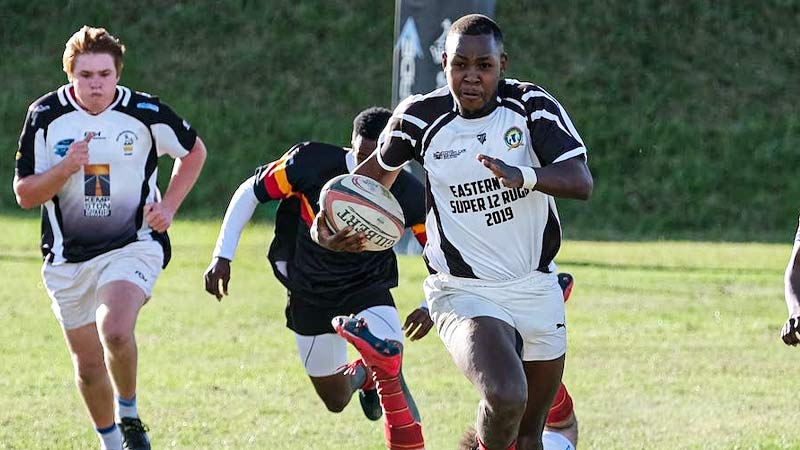In the world of rugby, every player has a designated role and purpose on the field, but some positions often go unnoticed despite their pivotal importance. One such position is the fullback.
While the forwards engage in bruising battles and the backs dazzle with their speed and agility, the fullback quietly holds a crucial role that can make or break a team’s performance.
So, what does a fullback do in rugby? In this exploration, we unveil the enigmatic world of the rugby fullback, uncovering the responsibilities, skills, and strategies that define this position.
From launching counterattacks to providing the last line of defense, a fullback’s contributions are integral to the ebb and flow of a rugby match. Join us as we delve into the multifaceted role of a fullback and gain a newfound appreciation for this unsung hero of the rugby field.
What Does a Fullback Do in Rugby?
The fullback in rugby typically wears the jersey number 15 and is positioned at the rear of the formation during various phases of the game. They are a pivotal part of the backline, responsible for fulfilling a diverse set of roles on the field.
Offensive Responsibilities
Counterattacking
One of the primary offensive roles of a fullback is to launch counterattacks. When the opposition kicks the ball downfield or loses possession, the fullback is often the first to retrieve it.
They utilize their speed and agility to initiate a swift counterattack, running the ball back into the opponent’s territory while evading defenders.
Support Play
Fullbacks are skilled support players, positioning themselves to be in the right place at the right time to receive passes from teammates. They join the attacking line, offering an additional option for ball carriers and ensuring continuity in the team’s offensive efforts.
Kicking
Fullbacks are known for their proficient kicking abilities. They can execute a variety of kicks, including clearing kicks to relieve pressure, high balls to contest possession, and tactical kicks to exploit space in the opponent’s defensive line.
Defensive Responsibilities

Last Line of Defense
Perhaps the most critical defensive role of a fullback is serving as the last line of defense. They must be prepared to make try-saving tackles, preventing opposing players from scoring by grounding the ball over the try line.
This role requires exceptional tackling skills, positional awareness, and courage.
Field Positioning
Fullbacks must position themselves strategically to cover potential kicking options by the opposition. They analyze the opponent’s attack patterns and anticipate where the ball might be kicked, ensuring they are in the right place to field and return kicks or support their teammates.
Defensive Reads
Fullbacks play a crucial role in reading the attacking plays of the opposition. They communicate with their teammates in the defensive line, directing them to cover areas vulnerable to potential breaches. This role involves leadership and decision-making under pressure.
Strategic Contributions
Fullbacks are often the eyes and ears of the defensive line. They communicate with their fellow defenders, directing them to adjust their positioning and defensive strategies based on the unfolding situation.
Effective communication is essential in preventing the opponent from exploiting gaps in the defense.
In addition to their role in defending kicks, fullbacks are responsible for contesting high balls. They leap to catch or tap the ball down to their own team, regaining possession or disrupting the opposition’s attack.
Fullbacks make split-second decisions about whether to run, pass, kick, or tackle based on the dynamic nature of the game. Their ability to make the right decisions under pressure is vital to the team’s success.
Versatility and Adaptability
One of the defining characteristics of fullbacks is their versatility. They must seamlessly transition between offensive and defensive roles throughout the match. This adaptability is a testament to their athleticism, rugby intelligence, and mental agility.
Key Skills and Attributes
Fullbacks require exceptional speed to cover ground quickly, both in attack and defense.
Their ability to change direction rapidly and evade tacklers is essential for counterattacking and defending. Fullbacks must be reliable tacklers, especially when facing powerful ball carriers.
Proficiency in various kicking techniques is crucial for field position and tactical play. Fullbacks must have exceptional field vision to read the game, anticipate plays, and make strategic decisions.
Who Is the Best Fullback in Rugby History?
While it’s challenging to definitively crown one player as the absolute best, we can highlight a few fullbacks from different eras who are widely regarded as some of the greatest in rugby history.
Serge Blanco (France)

Serge Blanco is often mentioned in discussions about the greatest rugby fullbacks of all time. The Frenchman enjoyed a glittering international career from the late 1970s to the early 1990s.
Known for his exceptional attacking skills, Blanco had a unique ability to join the backline as an extra attacker, creating try-scoring opportunities and mesmerizing fans with his elusiveness and vision. He earned 93 caps for France and played a pivotal role in the team’s success during the 1980s.
Christian Cullen (New Zealand)
Christian Cullen, hailing from New Zealand, is another fullback who left an indelible mark on the rugby world. Known as the “Paekakariki Express,” Cullen possessed electrifying speed, impeccable ball-handling skills, and a keen rugby brain.
He played 58 Tests for the All Blacks and scored 46 tries, showcasing his try-scoring prowess from the back.
Gavin Hastings (Scotland)
Gavin Hastings is a Scottish rugby legend and one of the most iconic fullbacks in the history of the sport. His tenure with the Scottish national team spanned from the mid-1980s to the mid-1990s.
Hastings was renowned for his powerful goal-kicking and strong defensive presence. He earned 61 caps for Scotland and played a pivotal role in their successes during that era.
Ben Smith (New Zealand)
In the modern era of rugby, Ben Smith is often cited as one of the finest fullbacks. Known for his versatility, exceptional field positioning, and ability to cover multiple positions in the backline, Smith contributed significantly to the success of the New Zealand All Blacks.
He played a crucial role in New Zealand’s back-to-back Rugby World Cup victories in 2011 and 2015.
Matt Burke (Australia)
Matt Burke, an Australian fullback, is revered for his consistent excellence and longevity in the sport. Burke was known for his accurate goal-kicking and reliable defense. He earned 81 caps for the Wallabies and played a key role in their Rugby World Cup victory in 1999.
Willie John McBride (Ireland)
Willie John McBride, primarily known as a lock forward, occasionally played at fullback during his illustrious career. Although not a traditional fullback, his versatility, leadership, and exceptional rugby intellect earn him a place in discussions of rugby’s greatest players.
McBride is best known for captaining the British and Irish Lions on their successful tour of South Africa in 1974.
Charles Piutau (New Zealand/Tonga)
In more recent times, Charles Piutau, a player of Tongan descent who represented both New Zealand and Tonga, has been hailed as a dynamic and versatile fullback. His ability to break the defensive line, offload in tackles, and create scoring opportunities made him a standout player in the fullback position.
While these players have all left an indelible mark on the rugby world, it’s important to remember that comparing players from different eras can be challenging due to changes in the game’s rules, tactics, and playing conditions.
The “best” fullback can vary depending on individual preferences, team dynamics, and the style of rugby played during a specific period.
Ultimately, the title of the “best” fullback in rugby history may remain subjective, and fans will continue to celebrate the unique contributions and skills of these exceptional players, each of whom has enriched the sport in their own way.
FAQs
Who holds the record for the most tries scored by a fullback in international rugby history?
New Zealand’s Christian Cullen holds the record for the most tries scored by a fullback in international rugby history. He scored 46 tries during his Test career with the All Blacks.
Has any fullback won the World Rugby Player of the Year award?
Yes, New Zealand’s Ben Smith, known for his performances as a fullback, won the World Rugby Player of the Year award in 2013. Smith’s versatility and exceptional skills earned him this prestigious accolade.
Who is considered the greatest fullback in the history of British and Irish Lions tours?
Willie John McBride, although not primarily a fullback, is often considered one of the greatest players in the history of British and Irish Lions tours. He played a key role as a lock forward and occasionally at fullback.
Which fullback had the longest international career in rugby history?
Gavin Hastings of Scotland is known for one of the longest international careers as a fullback in rugby history. His tenure spanned from the mid-1980s to the mid-1990s, during which he earned 61 caps for Scotland.
Are there any current fullbacks who are considered among the best in the world?
The status of the best fullback in the world is often subject to change due to player performances and the evolution of the game. Players like Beauden Barrett (New Zealand), Stuart Hogg (Scotland), and Cheslin Kolbe (South Africa) were considered among the top fullbacks in international rugby.
Conclusion
The fullback stands as a linchpin, a player whose significance often belies their position on the field. As we’ve journeyed through the responsibilities, skills, and strategies that define the role of a fullback, one thing becomes abundantly clear: they are far from being mere spectators in the game.
The fullback, often the unsung hero, is a master of balance, possessing the ability to transition seamlessly between attack and defense. From launching precision kicks into enemy territory to executing elusive runs through a sea of defenders, their versatility is their strength.
The fullback in rugby is the embodiment of adaptability and reliability. They may not always bask in the spotlight, but their contributions resonate in the outcome of every match.
So, the next time you watch a rugby game, take a moment to appreciate the silent guardian at the back—the fullback—who keeps the game’s intricate balance intact.







